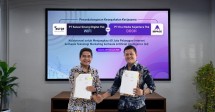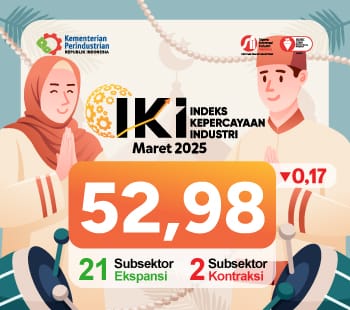Know your code—and know your stuff!
By : Krishna Anindyo | Tuesday, July 07 2020 - 07:00 IWST

An Open Source Audit Digs Into a Codebase to See What’s Inside
INDUSTRY.co.id - The nature of open source use makes it hard to track. Open source in a codebase typically results from the collective decisions of individual developers. A developer faced with a gap in functionality might cast about the internet for a “puzzle piece” — an open source component, a code snippet — that fits. The result: A puzzle completed in less time, with less effort, than if your developers had to craft each piece from scratch.
But some developers are more savvy than others about vetting the components they ingest on their company’s behalf. And without proper vetting, those components can embed quality, security, and license issues into the finished project.
Tracking trends in open source use through audits
It’s a challenge to track open source within companies (though software composition analysis makes the job more manageable). It’s even harder to do so at the industry level. But understanding industry wide open source trends is essential to crafting best practices that keep your development organization ahead of the game.
So how can we get a complete picture of what’s going on in the industry? Through data aggregated from open source software audits. In open source audit, the audit team pries open a codebase to see what’s inside.
The results of one audit are almost always surprising. And when we combine the data from thousands of audits, we see clear patterns in open source use that every development organisation should be aware of.
Making sense of our open source audit data
My Black Duck Audit Services team analyses more code for open source than anyone in the world, across all industries and technologies. Through brute force, for the last four years, we’ve been digging into codebases and aggregating anonymised data on code composition, legal issues, security issues, and other operational factors.
Recently, working with the Synopsys Cybersecurity Research Center (CyRC), we published our 2020 Open Source Security and Risk Analysis report, a great bedtime read for anyone in software.
Below are some highlights of what we found across over 1,250 codebases we reviewed in open source audits in 2019. But you really should download the report to get more details and a breakout by industry.
You may also want to check out our open source in M&A webinar, in which I put the results in the M&A context. “Phil really knows his stuff,” one participant commented at the end. But that’s shooting a compliment at the messenger. The reality is Synopsys knows its stuff when it comes to open source.
Software composition
Virtually every codebase reviewed in an audit last year (99%) included some open source.
Most of the code in these codebases, 70%, was open source.
The average codebase contained about 445 open source components.
License risk
73% of the codebases had at least one license issue.
67% of the codebases contained components with license conflicts, most frequently GNU GPL conflicts.
Security risk
75% of codebases under audit contained open source components with unpatched vulnerabilities.
The percentage of codebases containing high-risk vulnerabilities increased to 49% in 2019.
Yes, Synopsys, with the CyRC and Black Duck Audit Services team, knows its stuff. After you read the report, you’ll know your open source stuff too!
Read Also
Wireless Logic Selected By Thales As IoT Connectivity Partner
Totolink Strengthens Commitment to Innovative and Reliable Network…
BDDC Inaugurates JST1 TIER IV Data Centre in Jakarta to Strengthen…
MoreLogin, the World's #1 Antidetect Browser, Showcased at Affiliate…
Experts gather in Nanning to support high-quality development of…
Today's Industry

Jumat, 02 Mei 2025 - 10:46 WIB
Binawan and Government Support Indonesian Nurses in Europe through Scholarships
In the midst of the viral #KaburAjaDulu hashtag as a symbol of the young generation's disappointment with domestic working conditions, Binawan responded with real action: dispatching Indonesian…

Jumat, 28 Maret 2025 - 22:21 WIB
SUNeVision Initiates MEGA IDC Phase Two Development
SUNeVision, the technology arm of Sun Hung Kai Properties (SHKP), today announced the commencement of construction for Phase Two of MEGA IDC in Tseung Kwan O. As Hong Kong's largest data centre…

Jumat, 28 Maret 2025 - 22:07 WIB
TDL Records New Revenue Record of IDR 25 Trillion in 2024 Ahead of 50th Anniversary
PT Metrodata Electronics Tbk (MTDL), the largest technology Company with the most complete IT and telecommunications products in Indonesia, managed to record a revenue of IDR 25 trillion in…

Jumat, 28 Maret 2025 - 21:53 WIB
Microvista Expands International Presence with Mobile CT System ScanExpress
The German specialist in industrial computed tomography and non-destructive testing, Microvista, announces the European expansion of its innovative mobile CT system, ScanExpress. The system…

Jumat, 28 Maret 2025 - 21:44 WIB
Turning Loss into Profit, INOV Optimistic in Maintaining Positive Performance this Year
PT Inocycle Technology Group Tbk (INOV:IJ) Indonesia's leading and largest PET waste recycling Company managed to book sales of IDR 629 Billion in 2024, an increase of 4.8% compared to the previous…

















News Comment